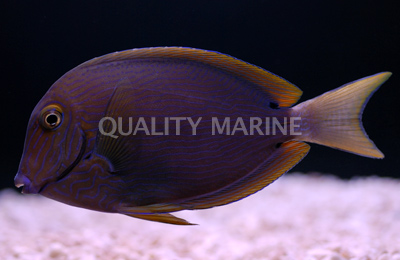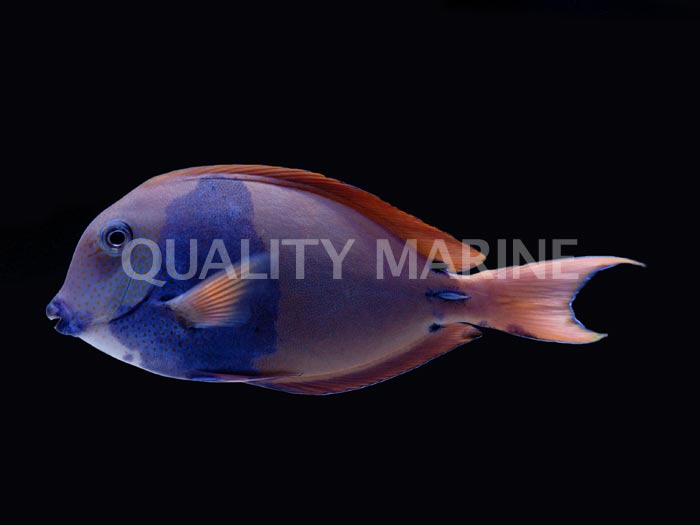Lavender Tang (Acanthurus nigrofuscus)

The Lavender Tang is one of the most abundant and wide-ranging acanthurids in the Indo-Pacific, but, despite this, its also one of the most frequently misidentified and underappreciated species by divers and aquarists. Researchers, on the other hand, have examined its feeding ecology, reproductive behaviors, and population genetics in immense detail, making it among the most well-studied of surgeon fishes.
Acanthurus nigrofuscus is also known commonly as the Dusky Surgeonfish, this being a rough translation of the scientific name and an unflattering description of its coloration. While specimens certainly do appear to be predominantly brown, there are a number of flourishes that serve to dramatically brighten its look. The fins of mature specimens take on a golden glow, which often develops additional complexity with overlaid shades of mauve or greyish-lavender. Much of this is dependent on both the individual and the relative lighting it is viewed under, as these colors are not entirely consistent within the species.

The forebody is covered in small orange spots, somewhat similar to those seen in A. maculiceps. Dark markings in the rear corners of the dorsal and anal fins and surrounding the lightly colored caudal spine are useful for distinguishing the Lavender Tang from other darkly colored members of this family, like the closely related A. nigros and A. nigroris. Ctenochaetus striatus is another oft-confused species.
The diverse lineage comprised of Acanthurus and Ctenochaetus (itself a subgroup of the former) includes a mix of species with varying feeding strategies, from true herbivores, to planktivores, to those specialized on a diet of nutritious detritus. Despite the reputation these fishes have for being primarily algal grazers, its actually the detritivores which numerically dominate, but the Lavender Tang is one of the true algal specialists. Its robust jaws are modified for short, quick bites, cropping turfs of threadlike algae like an aquatic cow.
After emerging from their shelters at night, large shoals assemble in the shallows to forage. The diet changes seasonally, from the comparatively nutrient poor red and brown foliage of the summer months, to the lush greens of the winter. Following this seasonal buffet, the gonads swell with eggs and mating commences.

With a maximum length of only around 8 inches, A. nigrofuscus is one of the more appropriately sized options for mid-size aquariums in need of an efficient algivore and can look every bit as attractive as its more colorful cousins in a mixed-tang tank. The Lavender Tang is a true highlight among the acanthurids and a species long overdue for a bit more appreciation.